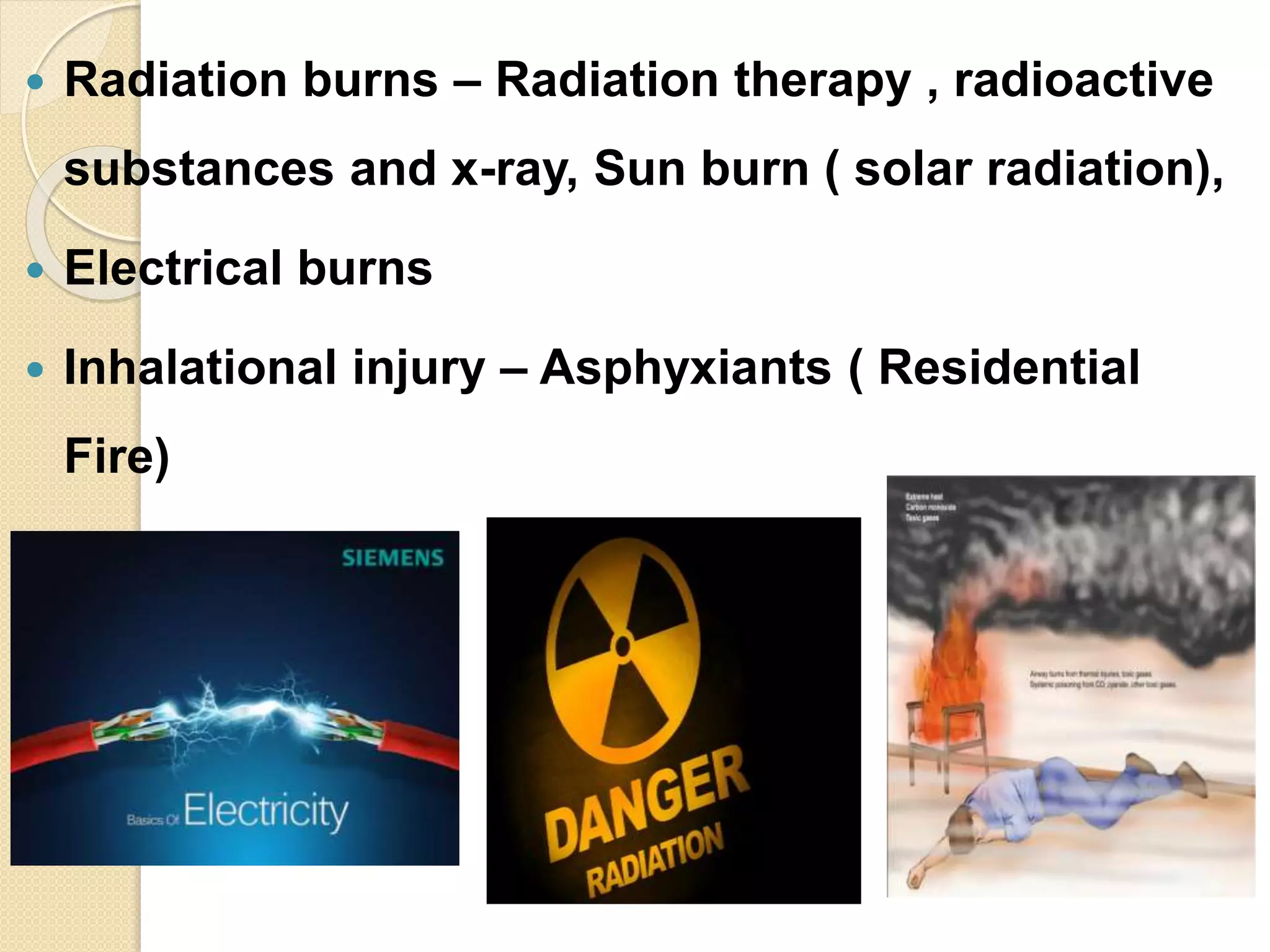This document discusses burns and their management. It begins with the anatomy and functions of skin, then defines burns and scalds. It describes the etiology, pathophysiology, classification, clinical manifestations, and management of burns in the emergency, acute, and rehabilitation phases. Management involves fluid resuscitation, wound care, pain management, prevention of infection, and rehabilitation including splinting and exercise. Complications include shock, infection, pulmonary issues, and psychological trauma. Nurses play an important role in rehabilitation, education, and monitoring for complications. Medico-legal consent is required to protect patients and staff.














































